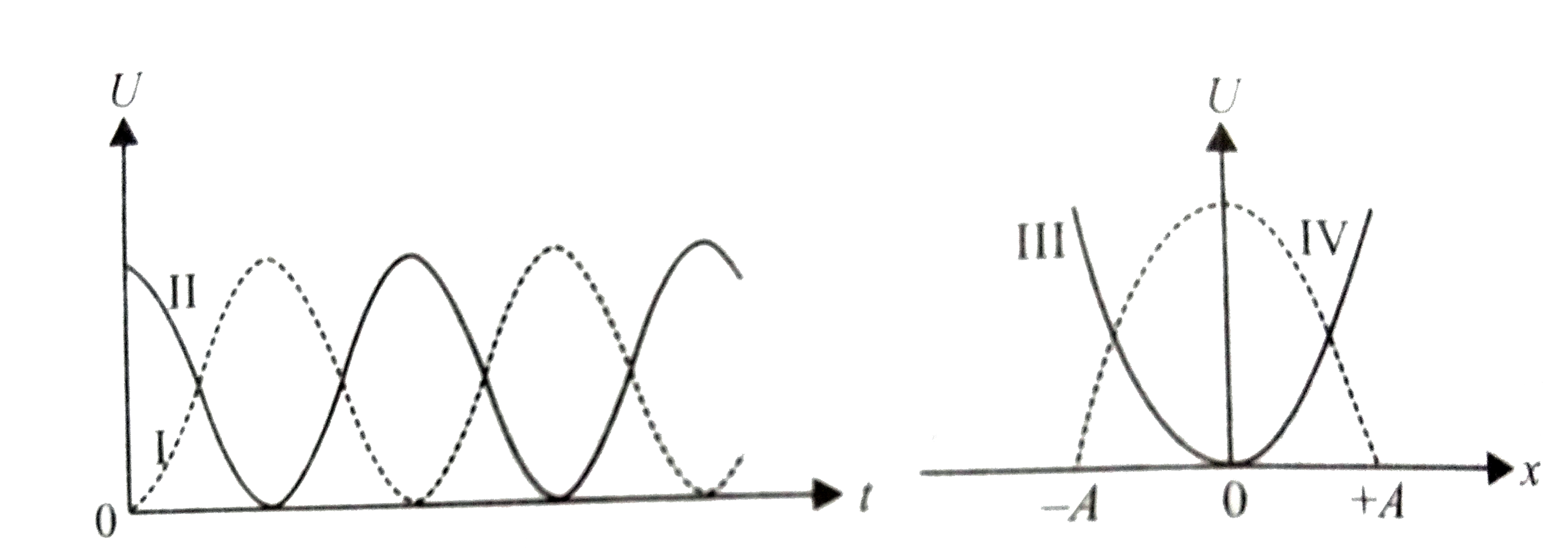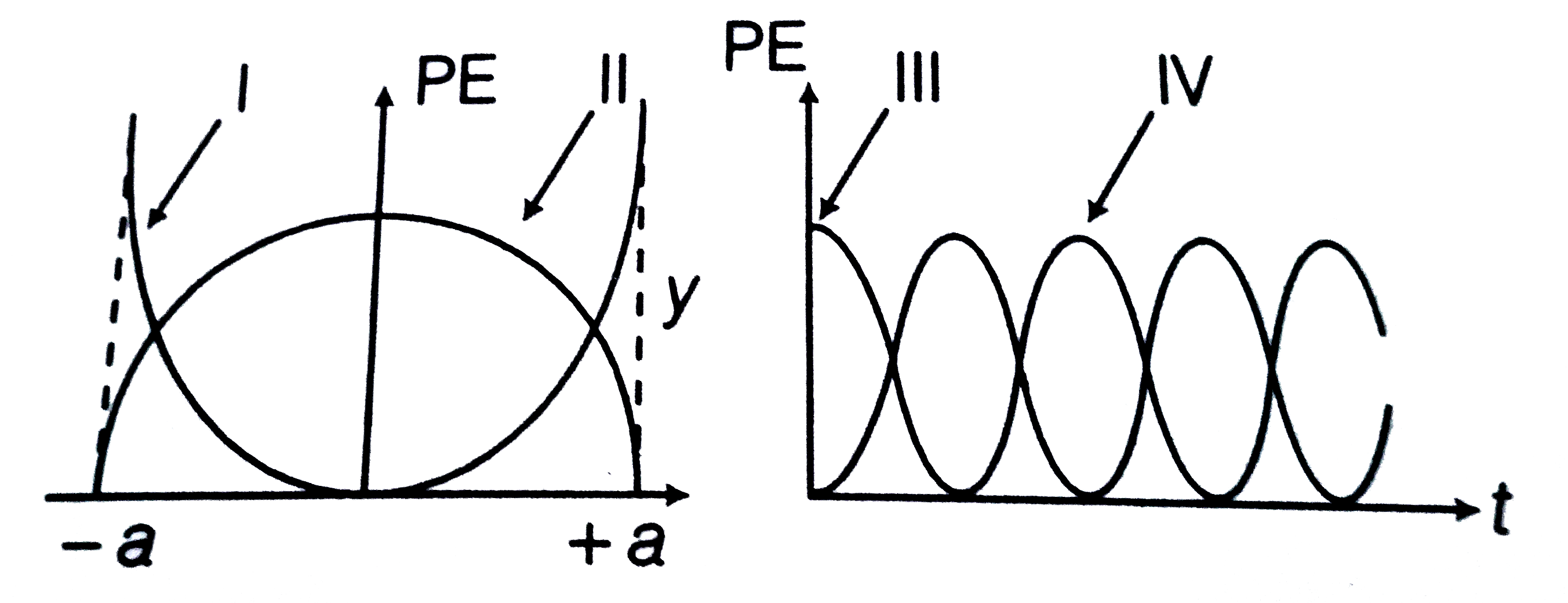For a particle executing simple harmonic motion, the displacement x is given by x=Acosωt. Identify the graph, which represents the variation of potential energy (U) as a function of time t and displacement x.

I,III
II,III
I,IV
II,IV
The correct Answer is:D
Given: x=Acosωt
Potential energy, U=12mω2x2=12mω2A2cos2ωt
On plotting a graph between potential energy U time t, we shall get a curve II and graph between U and x we shall get curve IV.
Topper's Solved these Questions
- OSCILLATIONS Book:NCERT FINGERTIPSChapter:OSCILLATIONS Exercise:Some Systems Executing Simple Harmonic Motion
Explore 29 Videos
- OSCILLATIONS Book:NCERT FINGERTIPSChapter:OSCILLATIONS Exercise:Damped Simple Harmonic Motion
Explore 5 Videos
- OSCILLATIONS Book:NCERT FINGERTIPSChapter:OSCILLATIONS Exercise:Force Law For Simple Harmonic Motion
Explore 2 Videos
- MOTION IN A STRAIGHT LINEBook:NCERT FINGERTIPSChapter:MOTION IN A STRAIGHT LINEExercise:Assertion And Reason
Explore 15 Videos
- PHYSICAL WORLDBook:NCERT FINGERTIPSChapter:PHYSICAL WORLDExercise:Assertion And Reason
Explore 10 Videos
Similar Questions
For a particle executing SHM, the displacement x is given by x=Acosωt. Identify the graph which represents the variation of potential energy (PE) as a function of time t and displacement x.

(a) I,III
(b) II,IV (c ) II,III
(d) I,IV
View SolutionThe total energy of a particle executing simple harmonic motion is
View Solution
Knowledge Check
For a particle executing S.H.M. the displacement x is given by x=Acosωt . Identify the graph which represents the variation of potential energy (P.E.) as a function of time
 AI,IIIBII, IVCII, IIIDI,IV
AI,IIIBII, IVCII, IIIDI,IVThe total energy of a particle executing simple garmonic motion is (x−displacement)
A∝xB∝x2CIndependent of xD∝x1/2A body executes simple harmonic motion. At a displacement x, its potential energy is U1. At a displacement y, its potential energy is U2. What is the potential energy of the body at a displacement (x + y)?
AU1+U2B(√U1+√U2)2C√U21+U22D√U1U2
If for a particle executing SHM, the equation of SHM is given as y=acosωt. Then which of the following graphs represents the variation in potential energy?

View SolutionFor a simple harmonic oscillator moving along a straight line, the graphs which represent the variation of kinetic energy K, potential energy U and total energy T with displacement are
View SolutionA body is executing simple harmonic motion. At a displacement x (from its mean position) its potential energy is E1 and at a displacement y its potential energy is E2. The potential energy is E at displacement (x+y) . Then:
View SolutionWhich of the following graphs best represents the variation of acceleration 'a' with displacement x?
View SolutionA body is executing simple harmonic motion As x displacement x its potential energy is E1 and at a displacement y its potential energy is E2 The potential energy E at displacement (x+y) is
View Solution

